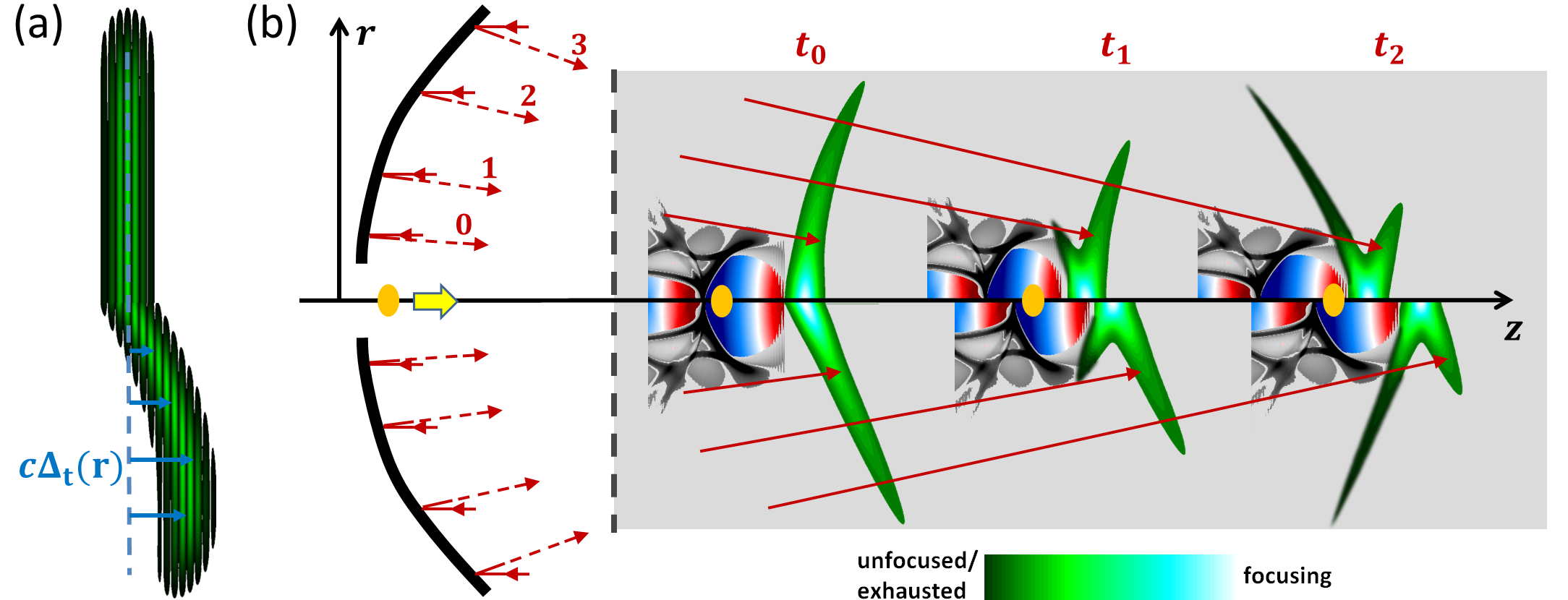Supervisors: Cédric Thaury, Igor Andriyash (LOA) & Maxence Thévenet (DESY)
LOA (Laboratoire d'Optique Appliquée), located in the suburbs of Paris on the Institut Polytechnique de Paris campus, has been a leading laboratory in laser-matter interaction and plasma physics for over 30 years. It has made significant contributions to the advancement of laser-plasma acceleration and plasma-based X-ray generation.
Laser-plasma accelerators can generate electric fields of several hundred GV/m, a thousand times greater than those of conventional radiofrequency accelerators. They can thus produce high-energy electrons over extremely short distances. The maximum energy of these so-called wakefield accelerators is ultimately limited by the dephasing between the electron beam and the accelerating field, generated by the plasma waves. This dephasing comes from the velocity difference between the accelerated particles, which quickly ramp up to almost the light speed in a vacuum, and the driver laser pulse that gets slower in plasmas. This limitation could, in principle, be removed by controlling the velocity of the accelerating plasma waves, which requires that the laser pulse propagates in a vacuum at a superluminal velocity (> c). We recently produced such a pulse experimentally, using a Bessel laser beam having spatio-temporal couplings, and showed numerically that it could dramatically increase the energy of the electrons produced through laser-plasma acceleration. However, many questions remain open: how to inject electrons into such accelerator, or how to ensure that the laser keeps its special properties in the plasma over long distances, and what is the energy efficiency of this accelerator? The project aims at studying numerically and theoretically this new acceleration scheme.
Expected Results
- Optimization the propagation of a superluminal and ultra-intense laser pulse in a plasma
- Development of the numerical framework for start-to-end simulations including optical, hydrodynamical, particle-in-cell simulations and interfaces between these models
- Optimization of spatiotemporal couplings for increasing the laser propagation length and controlling the electron injection
- Study on the energy efficiency of the accelerator
- Exploration the potential of ultra-intense superluminal pulses for other applications
Planned secondments
- 2 months at DESY (year 1): hydrodynamic simulations of laser-generated plasmas
- 2 months at DESY (year 2)): start to end modelling and machine learning
Schematic view of laser-plasma acceleration with a superluminal laser pulse, without (top) and with (bottom) spatio-temporal couplings (STCs). (a) Illustration of the spatio-temporal couplings, which take the form of a radial delay. (b) Evolution of the laser pulse (green to light blue color gradient) along the focal line, co-propagating with the electron plasma wave (grey levels) that sustains strong wakefields (color scale from blue to red). Three distinct propagation times are shown, with ray ii focusing at tii. With STCs, an externally injected relativistic electron bunch (orange dot) remains in phase with the strongest accelerating wakefield (dark blue). In contrast, without STCs, the electron bunch slips into a decelerating region (red).

